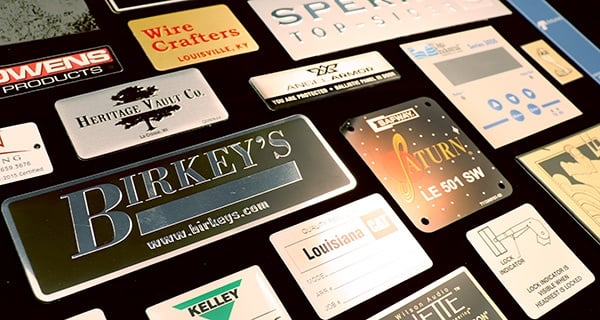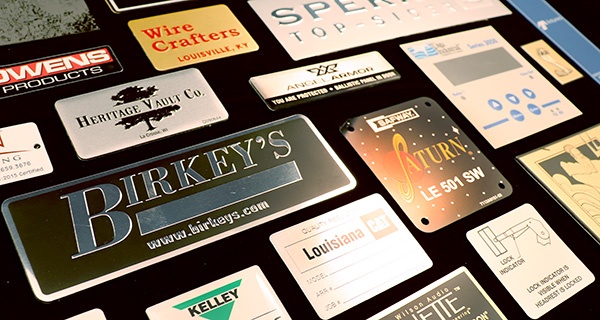A nameplate is typically designed to showcase a brand's logo, company information, and, in some cases, important safety information related to operating or usage instructions. An effective nameplate is one that stays in place and remains legible for the life of the product. In order to ensure this longevity, one of the standard questions asked during a project review is the type of environment that the nameplate will be exposed to. Here are some of the common concerns that can affect how long your nameplate or label lasts.
Abrasion or Scratches on Nameplate Surfaces
Nameplates and graphic overlays can be subjected to heavy handling. This can lead to potential for graphics and surface decoration to become worn away, increasing risk for injury or missed instruction. Another issue with this is a loss of brand awareness because company logo or contact information is no longer visible.
Choosing materials for these applications means taking into consideration the end application and expected performance requirements. A wide variety of materials are available on both metal and flexible substrates. Hard-coated surfaces and other processing options are available to review for best results. Care is taken during production and packing to be sure that parts are protected and arrive as expected.
Corrosion or Wearing Away of Nameplate Material
The last thing that is wanted when a nameplate is attached to a product is that it wears away. Unfortunately there are harsh environments or chemicals that when exposed over time will corrode material. If your application is for a nameplate, data plate or label that will live in this type of environment, it is important to communicate that up front. Knowing that there is potential for exposure to things like sea water, certain chemicals, high heat, or wind can impact the material or processing that is needed to make a part that will last.
Securing a Nameplate to the Product
A common question when designing aluminum nameplates and badges involves how to ensure a secure attachment to the end product. This can be a concern with any shape of a nameplate and on any type of product from industrial equipment and furniture to medical equipment and consumer electronics. Deciding which option is best will depend on your specific application. Many times the answer is simply to supply the nameplate with a peel and stick adhesive or to pierce holes which allow for assembly with rivets or screws.
Options for Nameplates that Last
A reasonable expectation for any product label is that graphics will remain clear and not fade or rub off. Anodizing metal, protective topcoats, second surface printing on plastic, and over laminate processes are durable solutions that stand up to indoor and outdoor environments. Additionally, it is important that the nameplate or badge stays in place. Reliable options including adhesive and mounting holes are available for review.
How Can We Help?
McLoone offers a diverse selection of material, processes and attachment solutions for durable and long lasting product identification. Thousands of brands trust us to deliver high quality ID plates, custom nameplates, labels and graphic overlays. Let's get started on a nameplate or label that will stand the test of time for your brand strategy.
Related Posts
Factors to Consider for Exterior Metal Badges
Adhesive Considerations for Outdoor Exposure
What are Weatherable Metal Nameplates
How to Pick the Right Adhesive for Your Nameplate
Originally published October 29, 2019, updated March 4, 2021 for clarity and resources.



